Ronald W Graham
age ~82
from Salem, OR
- Also known as:
-
- Ron W Graham
- Phone and address:
- 830 Judson St SE, Salem, OR 97302
Ronald Graham Phones & Addresses
- 830 Judson St SE, Salem, OR 97302
- Seattle, WA
- Medford, OR
- Mountlake Ter, WA
Work
-
Company:Lake union cafe
-
Address:3119 Eastlake Ave E, Seattle, WA 98102
-
Phones:2065681258
-
Position:Genaral manager
-
Industries:Eating Places
Ranks
-
Licence:New Jersey - Active
-
Date:1992
Lawyers & Attorneys

Ronald Graham - Lawyer
view sourceISLN:
906940684
Admitted:
1986
University:
Duke University, A.B., 1983
Law School:
University of Illinois, J.D., 1986

Ronald M Graham - Lawyer
view sourceLicenses:
New Jersey - Active 1992

Ronald Graham - Lawyer
view sourceOffice:
Edwin Coe LLP
ISLN:
915223419
Admitted:
1996
University:
MICS, M.A.

Ronald Graham - Lawyer
view sourceOffice:
Eversheds LLP
Specialties:
Pensions
Pension Scheme Disputes
Pension Scheme Disputes
ISLN:
906940707
Admitted:
1985
Isbn (Books And Publications)


Concrete Mathematics: A Foundation for Computer Science
view sourceAuthor
Ronald L. Graham
ISBN #
0201142368

Concrete Mathematics: A Foundation for Computer Science
view sourceAuthor
Ronald L. Graham
ISBN #
0201558025





Us Patents
-
Method For Producing Metal Fibers
view source -
US Patent:7073559, Jul 11, 2006
-
Filed:Jul 2, 2003
-
Appl. No.:10/612232
-
Inventors:Philip M. O'Larey - Albany OR, US
John J. Hebda - Albany OR, US
Ronald A. Graham - Salem OR, US -
Assignee:ATI Properties, Inc. - Albany OR
-
International Classification:B22D 11/00
-
US Classification:164 761, 164 691, 164462, 164423, 148513, 148561, 148403, 148422, 148423
-
Abstract:A method of producing metal fibers including melting a mixture of at least a fiber metal and a matrix metal, cooling the mixture to form a bulk matrix comprising at least a fiber phase and a matrix phase and removing at least a substantial portion of the matrix phase from the fiber phase. Additionally, the method may include deforming the bulk matrix. In certain embodiments, the fiber metal may be at least one of niobium, a niobium alloy, tantalum and a tantalum alloy and the matrix metal may be at least one of copper and a copper alloy. The substantial portion of the matrix phase may be removed, in certain embodiments, by dissolving of the matrix phase in a suitable mineral acid, such as, but not limited to, nitric acid, sulfuric acid, hydrochloric acid and phosphoric acid.
-
Corrosion Resistant Fluid Conducting Parts, Methods Of Making Corrosion Resistant Fluid Conducting Parts And Equipment And Parts Replacement Methods Utilizing Corrosion Resistant Fluid Conducting Parts
view source -
US Patent:7922065, Apr 12, 2011
-
Filed:Feb 18, 2005
-
Appl. No.:11/061355
-
Inventors:Richard C. Sutherlin - Albany OR, US
Brett J. Herb - Salem OR, US
Ronald A. Graham - Salem OR, US -
Assignee:ATI Properties, Inc. - Albany OR
-
International Classification:B23K 20/12
-
US Classification:2281121, 22826271, 228183, 228 23, 2989003
-
Abstract:According to one aspect of the present disclosure, a part for an article of equipment includes a fluid conducting first region including a corrosion resistant first material, and a fluid conducting second region including a second material. The first region and the second region are either directly or indirectly joined by solid state welding to form a unitary fluid conducting part. According to another aspect of the present disclosure, a method for replacing at least one fluid conducting part of an article of equipment is disclosed wherein a replacement part is provided that includes a fluid conducting first region including a corrosion resistant first material, and a fluid conducting second region including a second material. The second material is substantially identical to the material of a region of the equipment on which the replacement part is mounted. The first and second regions are either directly or indirectly joined by solid state welding to form a unitary fluid conducting replacement part.
-
Processing Of Titanium-Aluminum-Vanadium Alloys And Products Made Thereby
view source -
US Patent:8048240, Nov 1, 2011
-
Filed:May 7, 2007
-
Appl. No.:11/745189
-
Inventors:John J. Hebda - Albany OR, US
Randall W. Hickman - Jefferson OR, US
Ronald A. Graham - Salem OR, US -
Assignee:ATI Properties, Inc. - Albany OR
-
International Classification:C22C 14/00
C22F 1/18 -
US Classification:148670, 148421, 148668, 148669, 420417, 420418, 420420
-
Abstract:A method of forming an article from an α−β titanium including, in weight percentages, from about 2. 9 to about 5. 0 aluminum, from about 2. 0 to about 3. 0 vanadium, from about 0. 4 to about 2. 0 iron, from about 0. 2 to about 0. 3 oxygen, from about 0. 005 to about 0. 3 carbon, from about 0. 001 to about 0. 02 nitrogen, and less than about 0. 5 of other elements. The method comprises cold working the α−β titanium alloy.
-
Processing Of Titanium-Aluminum-Vanadium Alloys And Products Of Made Thereby
view source -
US Patent:8597442, Dec 3, 2013
-
Filed:Sep 12, 2011
-
Appl. No.:13/230046
-
Inventors:John J. Hebda - Albany OR, US
Randall W. Hickman - Jefferson OR, US
Ronald A. Graham - Salem OR, US -
Assignee:ATI Properties, Inc. - Albany OR
-
International Classification:C22C 14/00
C22F 1/18 -
US Classification:148670, 148421, 148668, 148669, 420417, 420418, 420420
-
Abstract:A method of forming an article from an α−β titanium including, in weight percentages, from about 2. 9 to about 5. 0 aluminum, from about 2. 0 to about 3. 0 vanadium, from about 0. 4 to about 2. 0 iron, from about 0. 2 to about 0. 3 oxygen, from about 0. 005 to about 0. 3 carbon, from about 0. 001 to about 0. 02 nitrogen, and less than about 0. 5 of other elements. The method comprises cold working the α−β titanium alloy.
-
Processing Of Titanium-Aluminum-Vanadium Alloys And Products Made Thereby
view source -
US Patent:8597443, Dec 3, 2013
-
Filed:Sep 12, 2011
-
Appl. No.:13/230143
-
Inventors:John J. Hebda - Albany OR, US
Randall W. Hickman - Jefferson OR, US
Ronald A. Graham - Salem OR, US -
Assignee:ATI Properties, Inc. - Albany OR
-
International Classification:C22C 14/00
C22F 1/18 -
US Classification:148670, 148421, 148668, 148669, 420417, 420418, 420420
-
Abstract:A method of forming an article from an α-β titanium including, in weight percentages, from about 2. 9 to about 5. 0 aluminum, from about 2. 0 to about 3. 0 vanadium, from about 0. 4 to about 2. 0 iron, from about 0. 2 to about 0. 3 oxygen, from about 0. 005 to about 0. 3 carbon, from about 0. 001 to about 0. 02 nitrogen, and less than about 0. 5 of other elements. The method comprises cold working the α-β titanium alloy.
-
Processing Of Titanium-Aluminum-Vanadium Alloys And Products Made Thereby
view source -
US Patent:20040221929, Nov 11, 2004
-
Filed:May 9, 2003
-
Appl. No.:10/434598
-
Inventors:John Hebda - Albany OR, US
Randall Hickman - Jefferson OR, US
Ronald Graham - Salem OR, US -
International Classification:C22F001/18
-
US Classification:148/670000
-
Abstract:A method of forming an article from an - titanium including, in weight percentages, from about 2.9 to about 5.0 aluminum, from about 2.0 to about 3.0 vanadium, from about 0.4 to about 2.0 iron, from about 0.2 to about 0.3 oxygen, from about 0.005 to about 0.3 carbon, from about 0.001 to about 0.02 nitrogen, and less than about 0.5 of other elements. The method comprises cold working the - titanium alloy.
-
Corrosion Resistant Fluid Conducting Parts, Methods Of Making Corrosion Resistant Fluid Conducting Parts And Equipment And Parts Replacement Methods Utilizing Corrosion Resistant Fluid Conducting Parts
view source -
US Patent:20100285327, Nov 11, 2010
-
Filed:Jul 20, 2010
-
Appl. No.:12/839618
-
Inventors:Richard C. Sutherlin - Albany OR, US
Brett J. Herb - Salem OR, US
Ronald A. Graham - Salem OR, US -
Assignee:ATI Properties, Inc. - Albany OR
-
International Classification:B32B 1/08
B23K 15/00
B23K 31/02
B23K 20/12
B32B 15/01 -
US Classification:428586, 228265, 21912114, 228155, 2281121, 228113
-
Abstract:According to one aspect of the present disclosure, a part for an article of equipment includes a fluid conducting first region including a corrosion resistant first material, and a fluid conducting second region including a second material. The first region and the second region are either directly or indirectly joined by solid state welding to form a unitary fluid conducting part. According to another aspect of the present disclosure, a method for replacing at least one fluid conducting part of an article of equipment is disclosed wherein a replacement part is provided that includes a fluid conducting first region including a corrosion resistant first material, and a fluid conducting second region including a second material. The second material is substantially identical to the material of a region of the equipment on which the replacement part is mounted. The first and second regions are either directly or indirectly joined by solid state welding to form a unitary fluid conducting replacement part. The replacement part is secured to the article of equipment by a process comprising fusion welding the second material of the second region of the replacement part to the substantially identical material of the mounting region of the article of equipment.
-
Processing Of Titanium-Aluminum-Vanadium Alloys And Products Made Thereby
view source -
US Patent:20140060138, Mar 6, 2014
-
Filed:Nov 6, 2013
-
Appl. No.:14/073029
-
Inventors:Randall W. Hickman - Jefferson OR, US
Ronald A. Graham - Salem OR, US -
Assignee:ATI Properties, Inc. - Albany OR
-
International Classification:B21B 1/26
-
US Classification:72200
-
Abstract:A method of forming an article from an α−β titanium including, in weight percentages, from about 2.9 to about 5.0 aluminum, from about 2.0 to about 3.0 vanadium, from about 0.4 to about 2.0 iron, and from about 0.2 to about 0.3 oxygen. The method comprises cold working the α−β titanium alloy.
License Records
Ronald E Graham
License #:
42535 - Expired
Category:
Nursing Support
Issued Date:
Jul 1, 1999
Effective Date:
Jul 12, 2010
Expiration Date:
Jul 1, 2010
Type:
Medication Aide
Ronald Wayne Graham
License #:
9593 - Expired
Category:
Pharmacy
Issued Date:
Mar 29, 1983
Effective Date:
Jan 1, 1992
Type:
Pharmacist
Name / Title
Company / Classification
Phones & Addresses
Valley Goldsmith Inc
Jewelers-Retail
Jewelers-Retail
109 Pembroke Street, West, Pembroke, ON K8A 5M7
6137323163
6137323163
Genaral Manager
Lake Union Cafe
Eating Places
Eating Places
3119 Eastlake Ave E, Seattle, WA 98102
Director
Graymont Western US Inc
Dimension Stone Quarry
Dimension Stone Quarry
8012623942
Secretary, President, Director
RLG HOLDINGS, INC
Holding Company
Holding Company
950 N 72 St STE 100, Seattle, WA 98103
1505 Westlake Ave N, Seattle, WA 98109
1505 Westlake Ave N, Seattle, WA 98109
XENIA YOUTH SELECT BASEBALL INC
CRYSTAL VISION SOFTWARE, LTD
Valley Goldsmith Inc
Jewelers-Retail
Jewelers-Retail
6137323163
Director
GRAYMONT, INC
Medicine Doctors

Ronald G. Graham
view sourceSpecialties:
Family Medicine
Work:
Olathe Medical ServicesCollege Point Primary Care
23450 College Blvd, Olathe, KS 66061
9137647788 (phone), 9137646088 (fax)
23450 College Blvd, Olathe, KS 66061
9137647788 (phone), 9137646088 (fax)
Education:
Medical School
Kansas City University of Medicine and Biosciences College of Osteopathic Medicine
Graduated: 1994
Kansas City University of Medicine and Biosciences College of Osteopathic Medicine
Graduated: 1994
Procedures:
Destruction of Benign/Premalignant Skin Lesions
Wound Care
Arthrocentesis
Electrocardiogram (EKG or ECG)
Psychological and Neuropsychological Tests
Pulmonary Function Tests
Skin Tags Removal
Vaccine Administration
Wound Care
Arthrocentesis
Electrocardiogram (EKG or ECG)
Psychological and Neuropsychological Tests
Pulmonary Function Tests
Skin Tags Removal
Vaccine Administration
Conditions:
Abnormal Vaginal Bleeding
Acute Bronchitis
Acute Conjunctivitis
Acute Pharyngitis
Acute Sinusitis
Acute Bronchitis
Acute Conjunctivitis
Acute Pharyngitis
Acute Sinusitis
Languages:
English
Description:
Dr. Graham graduated from the Kansas City University of Medicine and Biosciences College of Osteopathic Medicine in 1994. He works in Olathe, KS and specializes in Family Medicine. Dr. Graham is affiliated with Olathe Medical Center.

Ronald M. Graham
view sourceSpecialties:
General Surgery
Work:
Vancouver Clinic
700 NE 87 Ave, Vancouver, WA 98664
3608822778 (phone), 3606041785 (fax)
700 NE 87 Ave, Vancouver, WA 98664
3608822778 (phone), 3606041785 (fax)
Education:
Medical School
George Washington University School of Medicine and Health Science
Graduated: 1961
George Washington University School of Medicine and Health Science
Graduated: 1961
Procedures:
Appendectomy
Gallbladder Removal
Hernia Repair
Laparoscopic Gallbladder Removal
Mastectomy
Small Bowel Resection
Spleen Surgey
Thyroid Gland Removal
Gallbladder Removal
Hernia Repair
Laparoscopic Gallbladder Removal
Mastectomy
Small Bowel Resection
Spleen Surgey
Thyroid Gland Removal
Languages:
English
Korean
Russian
Spanish
Korean
Russian
Spanish
Description:
Dr. Graham graduated from the George Washington University School of Medicine and Health Science in 1961. He works in Vancouver, WA and specializes in General Surgery. Dr. Graham is affiliated with Legacy Salmon Creek Medical Center and PeaceHealth Southwest Medical Center.

Ronald Atly Graham
view sourceSpecialties:
Ophthalmology
Orthopaedic Surgery
Sports Medicine
Sports Medicine
Occupational Medicine
Orthopaedic Surgery
Sports Medicine
Sports Medicine
Occupational Medicine
Education:
University of Mississippi(1975)
Plaxo

Ronald Graham
view source
Ronald Graham
view source
Ronald Graham
view sourceName: Ronald Graham
Employment: Retired
Marital Status: Divorced
Live In: Michigan
Hobbie: Hunting, Fishing, Target Shooting
Cooking, Computer
Sport... Name: Ronald Graham
Employment: Retired
Marital Status: Divorced
Live In: Michigan
Hobbie: Hunting, Fishing, Target Shooting
Cooking, Computer
Sport: Boxing Only
Classmates

Ronald Graham
view sourceSchools:
Killarney Secondary School Vancouver Saudi Arabia 1963-1967
Community:
Doug Andrus, Cathy Eshom, Lorraine Peebles, Jack Harris

Ronald Graham
view sourceSchools:
Lawrence County High School Moulton AL 1946-1950
Community:
Jan Weatherwax, Donald Tucker, Harold Letson

Ronald Graham
view sourceSchools:
Lowell Junior High School Lowell MI 1967-1969
Community:
Sharon Green

Ronald Graham
view sourceSchools:
Mercer High School Mercer PA 1970-1974
Community:
Glenn Oaks, Gloria Minner, Donna Hogue

Ronald Graham
view sourceSchools:
St. Philip Neri High School Detroit MI 1946-1957
Community:
Jackee Phillips, Fred Martin, Tom Nelson, Bruce Pfefferle, Pauline Cassano

Ronald Graham
view sourceSchools:
Wheeler County High School Alamo GA 1979-1983

Ronald Graham
view sourceSchools:
Wasilla High School Wasilla AK 1980-1984
Community:
Esther Lynch, Julie Ham

Ronald Graham
view sourceSchools:
Union County High School Union KY 1967-1971
Community:
Stephanie Manley, Tonya Jordan, Georgia Oakley

Ronald Graham
view source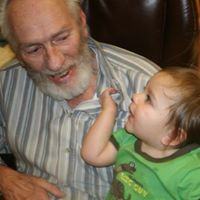
Ronald Ted Graham
view source
Ronald Beeziy Graham
view source
Ronald Raheem Graham
view source
Ronald Graham Jr.
view source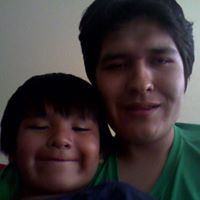
Ronald Graham Jr.
view source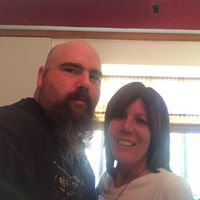
Ronald Graham
view source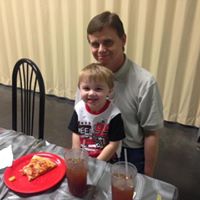
Ronald Graham
view sourceGoogleplus

Ronald Graham
Work:
Settle 4 Nothing - Bassist
Education:
Santa Fe Community College - Undeclared
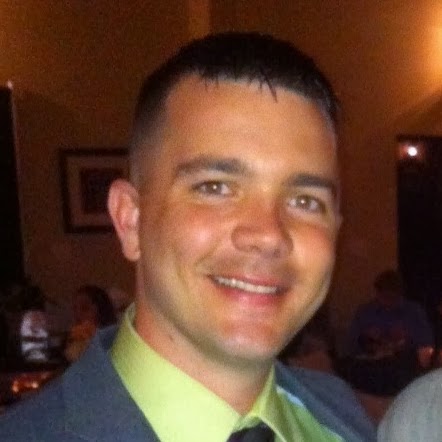
Ronald Graham

Ronald Graham

Ronald Graham
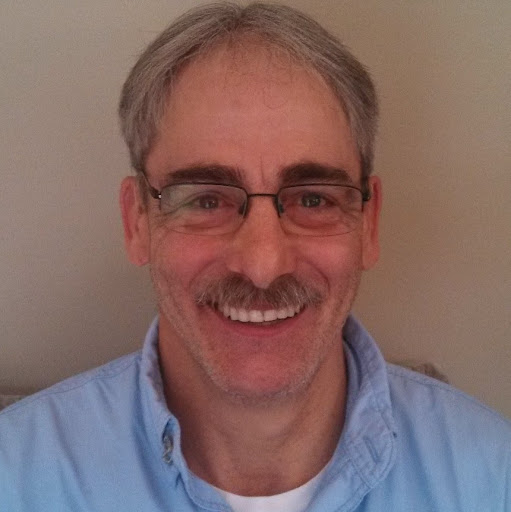
Ronald Graham

Ronald Graham

Ronald Graham

Ronald Graham
Youtube
Myspace
News

The numbers that are too big to imagine
view source- Conceived of in the 1970s, the mathematician Ronald Graham used it as part of a mathematical proof. He proposed it to solve a problem in a branch of mathematics called Ramsey theory, which deals with how to find order in chaos.
- Date: Mar 20, 2023
- Category: Technology
- Source: Google
Flickr
Get Report for Ronald W Graham from Salem, OR, age ~82


















